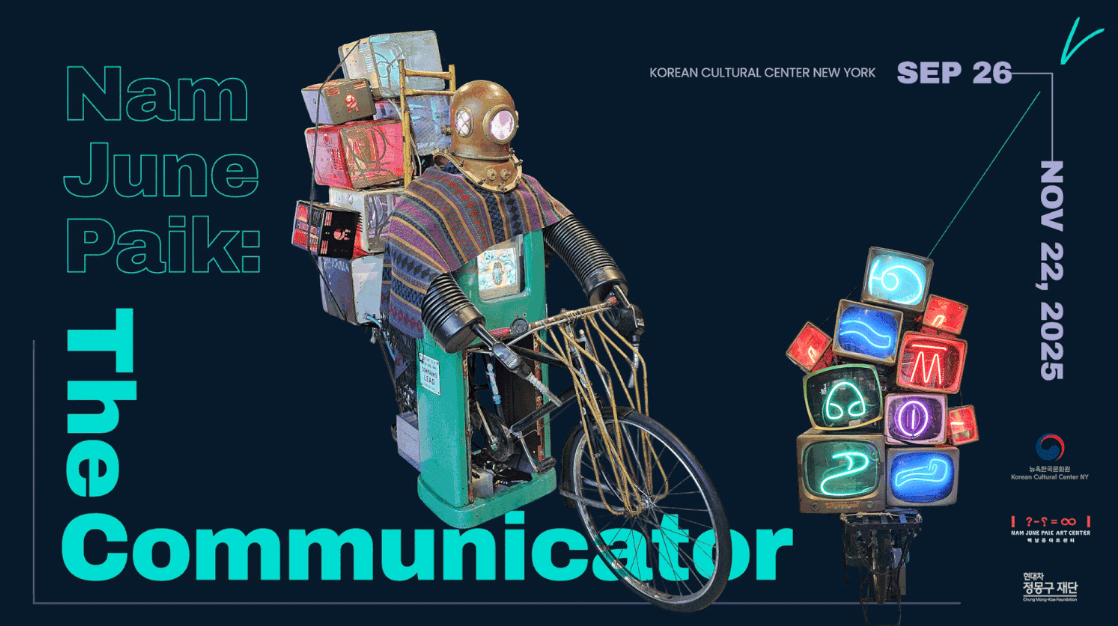New York — September 2025 — The Korean Cultural Center New York (KCCNY) is set to reveal Nam June Paik: The Communicator, a major retrospective spotlighting the pioneering video-artist’s life and legacy. From September 26 through November 22, 2025, the dual-floor exhibition offers visitors an immersive exploration of Paik’s continuing influence on the intersection of art, technology, and global cultural exchange.
In partnership with the Nam June Paik Art Center and the Hyundai Motor Chung Mong-Koo Foundation, the exhibit coincides with Korea’s 80th anniversary of liberation — reinforcing Paik’s enduring role as a bridge-builder between tradition and innovation.
Paik (1932-2006), widely regarded as the founder of video art, moved beyond mere technological experimentation. He reimagined electronic media not just as tools, but as conduits for connection — between people, across cultures, and across time. This exhibition emphasises Paik’s belief in art as participation and encounter rather than passive viewing.
On the second floor, several of Paik’s canonical works will be on display: including TV Cello, robot sculptures, Rehabilitation of Genghis Khan, Yulgok, Rabbit Inhabits the Moon, and more. These pieces reveal how Paik transformed everyday electronics like television sets into expressive, human-adjacent art forms.
The first floor features a dialogue between Paik’s works and that of younger media artists. A highlight is The Car Toward the Future (2025) by Areum Kim, which reflects the same spirit of unity and human-centric technological vision present in Paik’s Rehabilitation of Genghis Khan. Through this juxtaposition, the show underlines how Paik’s ideas are still alive and evolving.
The gallery is open Tuesday through Friday from 10 am to 6 pm, and on Saturdays from 11 am to 5 pm. Be aware: the Center is closed on Sundays and Mondays.
Beyond the artworks, Nam June Paik: The Communicator serves as both commemoration and provocation: it honours Paik’s legacy while posing questions about what communication means in the digital age. How does technology enrich or limit human connection? And how do East-West dialogues continue to transform artistic expression today?







